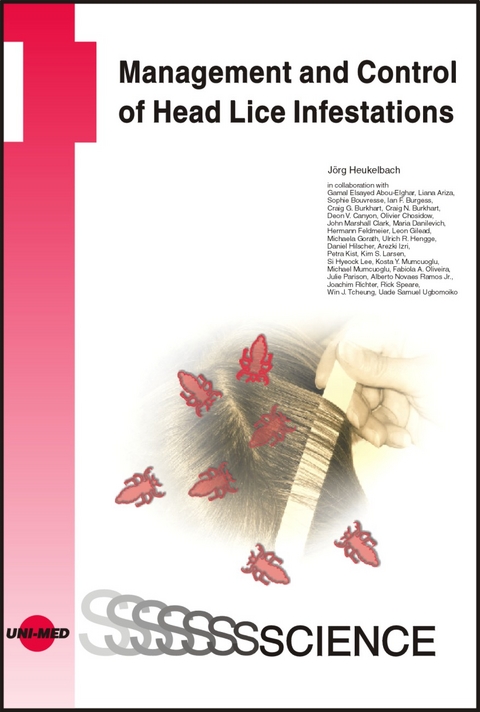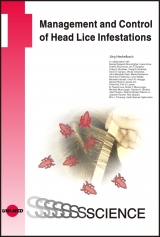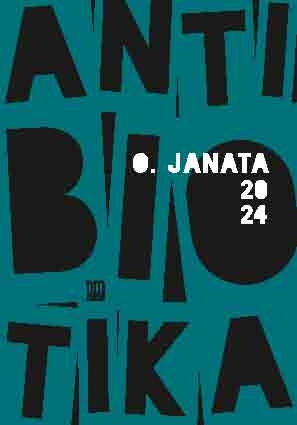Management and Control of Head Lice Infestations
UNI-MED (Verlag)
978-3-8374-1203-1 (ISBN)
1. Of Lice and Man—a Short History
1.1. References
2. Head Lice Biology
2.1. Morphology
2.2. Feeding and water physiology
2.3. Mating, eggs and reproduction
2.4. Life cycle
2.5. References
3. Epidemiology
3.1. Transmission and risk factors
3.1.1. Fomite-to-head transmission
3.1.2. Head-to-head transmission
3.1.3. Social and behavioural transmission factors
3.1.4. Risk factors
3.1.5. Conclusions
3.1.6. References
3.2. Prevalence and incidence of head lice
3.2.1. Prevalence
3.2.2. Seasonal variation
3.2.3. Incidence
3.2.4. References
4. Clinical Aspects
4.1. Symptoms
4.2. Signs
4.3. References
5. Diagnosis and Rapid Assessment
5.1. Diagnosis of head lice infestations
5.1.1. Diagnosis of active infestation
5.1.2. Diagnosis of historical infestation
5.1.3. References
5.2. Rapid assessment of head lice infestations
5.2.1. References
6. Treatment Options and Resistance
6.1. Mechanical removal of lice and eggs
6.1.1. Lice and nit removal combs
6.1.2. References
6.2. Treatments using pediculicides with neurotoxic mode of action
6.2.1. Natural pyrethrins and semi-synthetic pyrethroids
6.2.2. Organophosphates (malathion)
6.2.3. Other insecticides
6.2.4. Formulations and application
6.2.5. Adverse events and safety concerns
6.2.6. Which insecticide should we choose?
6.2.7. References
6.3. Mechanisms of resistance
6.3.1. References
6.4. Resistance to chemical compounds
6.4.1. Phenothrins
6.4.2. Malathion
6.4.3. Conclusions
6.4.4. References
6.5. Monitoring permethrin resistance in human head lice using knockdown resistance (kdr) gene mutations
6.5.1. Molecular mechanisms of knockdown permethrin resistance
6.5.2. Molecular detection of kdr mutations for resistance monitoring
6.5.3. Determination of kdr allele frequencies in human head louse populations worldwide
6.5.4. Head louse resistance management
6.5.5. References
6.6. Silicone oils for the treatment of head lice infestations
6.6.1. References
6.7. "Natural" treatments and home remedies
6.7.1. Pyrethrins
6.7.2. Tea tree
6.7.3. Neem
6.7.4. Quassia
6.7.5. Ylang ylang
6.7.6. Custard apple
6.7.7. Clove
6.7.8. Lippia species
6.7.9. Coconut
6.7.10. Vegetable oils
6.7.11. Eucalyptus and other herbs
6.7.12. Ovicides
6.7.13. Conclusions
6.7.14. References
6.8. Oral drugs for the treatment of head lice
6.8.1. Ivermectin
6.8.2. Trimethoprim-sulfamethoxazole (co-trimoxazole)
6.8.3. Albendazole
6.8.4. Levamisole
6.8.5. Phenylbutazon
6.8.6. Thiabendazole
6.8.7. References
6.9. Other approaches for head lice management: spinosad and oxyphthirine®
6.9.1. Spinosad
6.9.2. Oxyphthirine®
6.9.3. References
6.10. Head lice repellents
6.10.1. Repellent mechanisms
6.10.2. Research on irritant-based tropotaxis
6.10.3. Factors affecting efficacy and effectiveness
6.10.4. Research on other repellent mechanisms
6.10.5. Area repellents
6.10.6. Lice repellents in humans
6.10.7. Final considerations
6.10.8. References
6.11. Potential for future treatments targeting endosymbionts of head lice
6.11.1. References
6.12. Is immunisation the future of louse control?
6.12.1. References
6.13. General considerations on treatments and treatment schemes
6.13.1. References
7. Head Lice and the Impact of Knowledge, Attitudes and Practices—a Social Science Overview
7.1. Knowledge
7.2. Social attitudes about the infestation
7.3. Practices
7.4. Conclusion
7.5. References
8. Knowledge and Practices of Health Professionals Regarding Head Lice
8.1. References
9. Prevention and Control
9.1. Control of head lice in developed market economies
9.1.1. Prevention and health education
9.1.2. Treatment
9.1.3. Involvement of stakeholders
9.1.4. The "No Nit Policy" and exclusion from school
9.1.5. Conclusion
9.1.6. References
9.2. Control of head lice in resource-poor communities
9.2.1. References
10. Regulatory Aspects of Head Lice Products
10.1. Medical devices
10.2. Medicinal products
10.2.1. Legal requirements
10.3. Comment
10.4. References
11. Lice as Vectors of Pathogenic Microorganisms
11.1. References
12. Internet Resources for Head Lice
| Erscheint lt. Verlag | 20.7.2010 |
|---|---|
| Reihe/Serie | UNI-MED Science |
| Zusatzinfo | 47 illustrations |
| Sprache | englisch |
| Maße | 170 x 240 mm |
| Gewicht | 390 g |
| Einbandart | gebunden |
| Themenwelt | Medizin / Pharmazie |
| Schlagworte | Hardcover, Softcover / Medizin • Kopflaus |
| ISBN-10 | 3-8374-1203-2 / 3837412032 |
| ISBN-13 | 978-3-8374-1203-1 / 9783837412031 |
| Zustand | Neuware |
| Haben Sie eine Frage zum Produkt? |
aus dem Bereich




